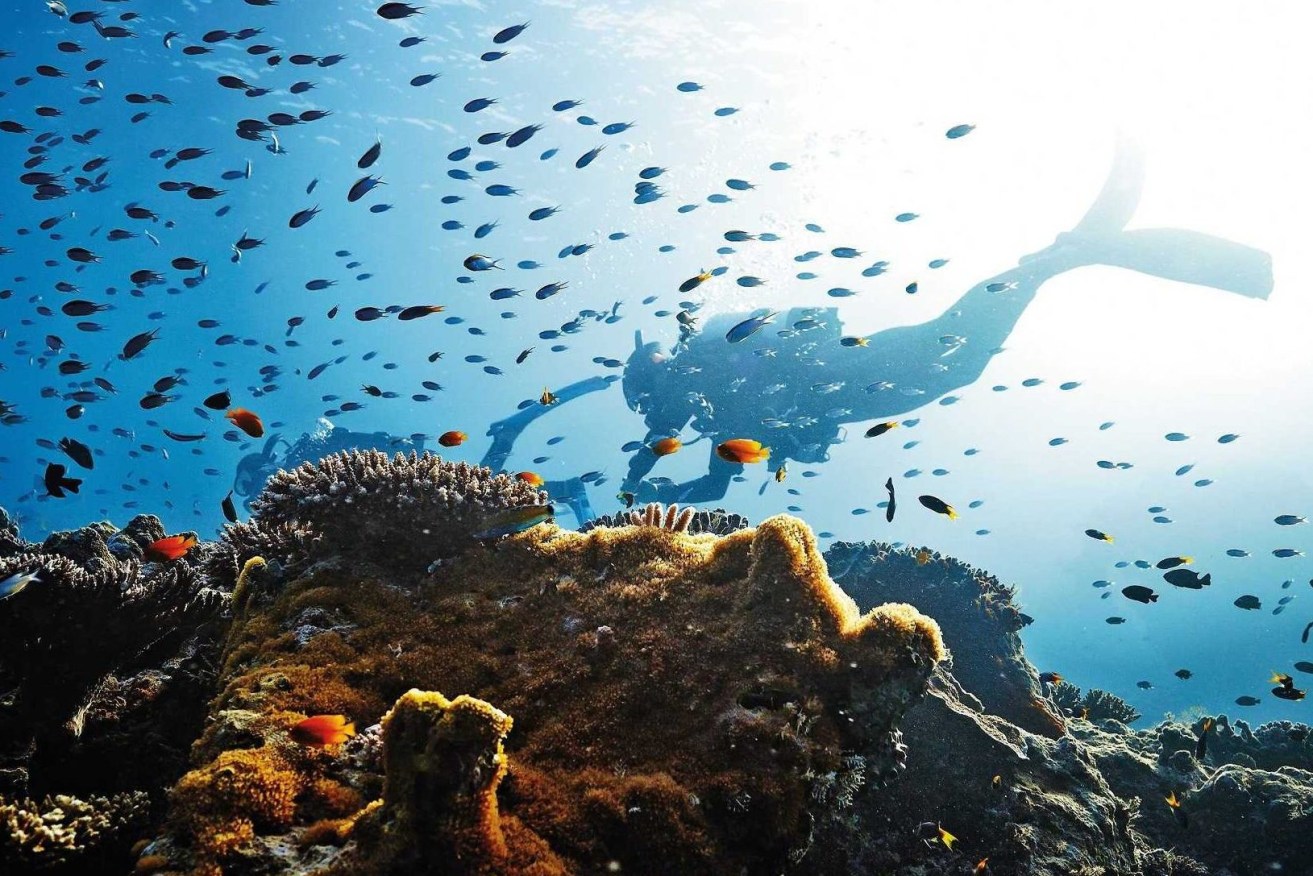Reef rebound is reason to rejoice, but we’re not quite out of the woods yet
Coral cover has bounced back across two thirds of the Great Barrier Reef but scientists say its long-term health remains at risk from climate change.


Certain species are taking up residence in coral affected by bleaching. (Photo: Australia Tourism)
In a glimmer of hope for the Great Barrier Reef’s recovery, northern and central sections of the reef along the Queensland coast have recorded their highest amount of coral cover since monitoring officially began 36 years ago.
The record coral cover comes as the Great Barrier Reef recovers from storms and mass-bleaching events.
But scientists say the new growth is made up of new coral that is even more susceptible to the combined attacks of global warming, the wrecking ball wave action of tropical cyclones, and is a favourite of the devastating crown of thorns starfish.
The Australian Institute of Marine Science (AIMS) today published its Annual Summary Report on the Coral Reef Condition, which surveyed 87 reefs between August 2021 and May 2022 and determined the proportion of the reef that was covered in living hard coral.
The report found average hard coral cover in the region north of Cooktown increased from 27 per cent in 2021 to 36 per cent coverage by May 2022, while in the central Great Barrier Reef down to Proserpine, the lift in coral coverage was from 26 per cent in 2021 to 33 per cent.
However, average coral cover in the southern region, which is the area off the state’s coast from Proserpine to Gladstone, dropped from 38 per cent to 34 per cent.
AIMS CEO Dr Paul Hardisty said the results in the northern and central regions were a sign the Great Barrier Reef could still recover.
However, while the increased coral coverage was clearly good news, it may not be enough for the powerful heritage authority UNESCO to be dissuaded from officially downgrading the reef’s status to “in danger”.
UNESCO inspected the reef in March during a mass bleaching event after last year releasing a draft report proposing it be placed on a list of world heritage sites “in danger”. It is due to release updated findings by September.
Hardisty said the loss of coral cover in the southern region of the reef showed how “dynamic” the recovery was and how quickly it could slip into danger.
“A third of the gain in coral cover we recorded in the south in 2020-21 was lost last year due to ongoing crown-of-thorns starfish outbreaks,” Hardisty said.
“This shows how vulnerable the reef is to the continued acute and severe disturbances that are occurring more often and are longer-lasting.”
Hardisty said the increased frequency of mass coral bleaching events was “uncharted territory” for the reef. The bleaching event this year was the fourth in seven years and the first to occur during a La Niña.
Bleaching is coral’s response to stressful conditions such as heat, that causes it to turn white and potentially die.
“In our 36 years of monitoring the condition of the Great Barrier Reef we have not seen bleaching events so close together,” he said.
“Every summer the reef is at risk of temperature stress, bleaching and potentially mortality and our understanding of how the ecosystem responds to that is still developing.
“The 2020 and 2022 bleaching events, while extensive, didn’t reach the intensity of the 2016 and 2017 events and, as a result, we have seen less mortality. These latest results demonstrate the reef can still recover in periods free of intense disturbances.”
AIMS monitoring program team leader Dr Mike Emslie said the 2022 results built on increases in coral cover reported for 2021, with most of the increase continuing to be driven by fast-growing Acropora corals.
“These corals are particularly vulnerable to wave damage, like that generated by strong winds and tropical cyclones,” Emslie said.
“They are also highly susceptible to coral bleaching, when water temperatures reach elevated levels, and are the preferred prey for crown-of-thorns starfish. This means that large increases in hard coral cover can quickly be negated by disturbances on reefs where Acropora corals predominate.”












